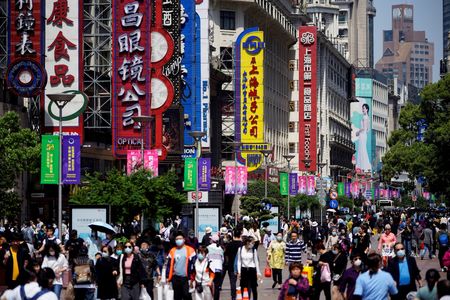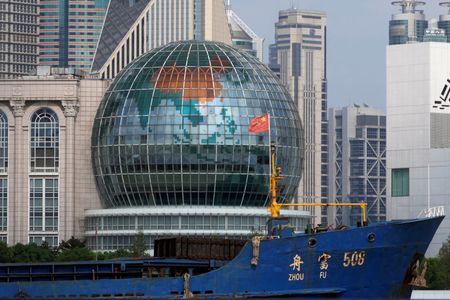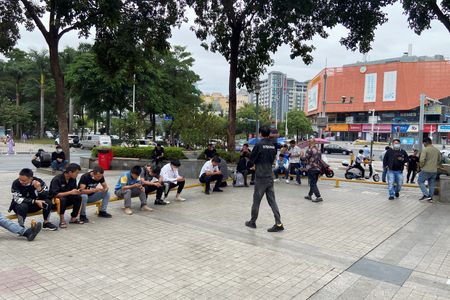BEIJING (Reuters) – Most Chinese provinces aim for economic growth of above 5% this year, pledging to focus on boosting consumption following a lifting of stringent COVID curbs, according to local government work reports.
China’s two biggest provincial economies – Guangdong in the south and Jiangsu in the east – aim to achieve more than 5% and around 5% gross domestic product growth (GDP) in 2023 respectively, their government work reports showed.
Commercial hub Shanghai, which was locked down for about two months last spring, targeted growth above 5.5% this year and pledged to prioritise consumption recovery. Pudong New Area, home to Shanghai’s largest airport and the main financial district, expected to drive up nearly 20 billion yuan ($2.95 billion) in consumption in the first quarter.
Zhejiang province, which is a “demonstration zone” for China’s common prosperity campaign, has set a more than 5% growth target this year, after missing its “around 6%” goal by half in 2022.
Only the capital Beijing and its neighbouring municipality of Tianjin aimed for lower growths of “more than 4.5%” and “around 4%” respectively. The two cities had regular mass COVID tests, adopted strict anti-virus curbs and suffered rounds of virus outbreaks in 2022.
China’s sudden relaxation of stringent anti-virus measures has boosted expectations of an economic revival this year, but businesses are feeling some short-term pains from rising COVID cases after the COVID policy U-turn last month.
The world’s second-largest economy grew 3% in 2022 from a year earlier, badly missing the official target of around 5.5% and hitting one of its worst rates in nearly half a century. Growth is expected to rebound to 4.9% in 2023, according to a Reuters poll.
China is likely to aim for economic growth of at least 5% in 2023 to keep a lid on unemployment, policy insiders said.
The tropical southern province of Hainan set an ambitious target of around 9.5% for 2023 growth, after the island’s main tourist hub, Sanya, locked in tens of thousands of tourists last August.
Local economies are ramping up efforts to revive the COVID-hit services sector as frequent and stringent lockdowns and restrictions kept shoppers at home and disrupted consumption activity.
Northern Hebei province vowed to expand domestic demand “by all means” and step up support to catering, accommodation and retail sectors, while the eastern province of Fujian said it would expand consumption of autos and home appliances.
As exports are seen weakening well into 2023 as the global economy teeters on the brink of recession, economists say policymakers had to rely on boosting domestic demand as the key driver for the economy this year.
($1 = 6.7735 Chinese yuan renminbi)
(Reporting by Ellen Zhang and Kevin Yao; Editing by Emelia Sithole-Matarise)



